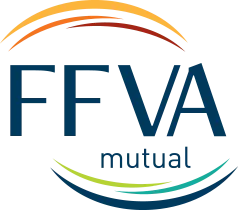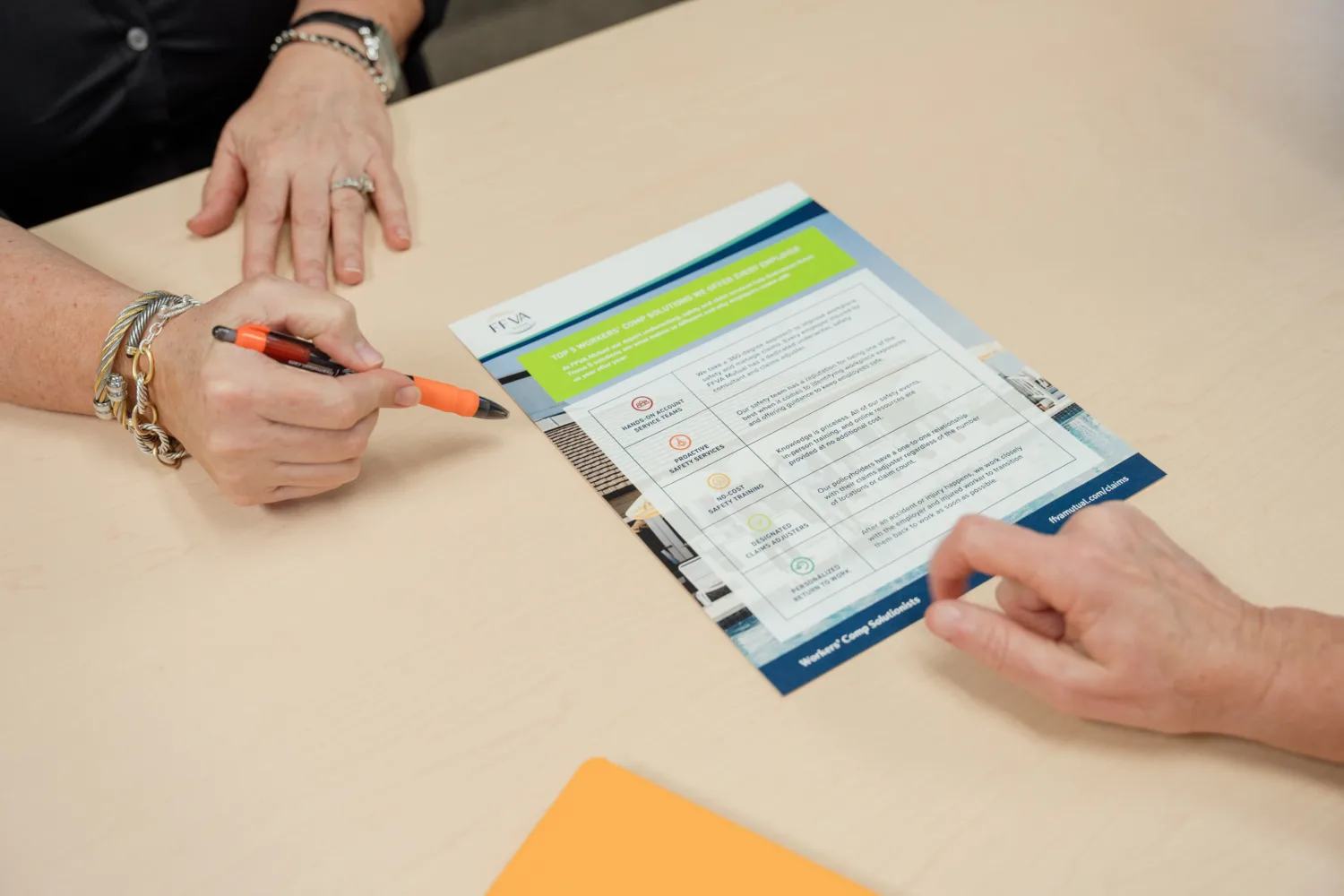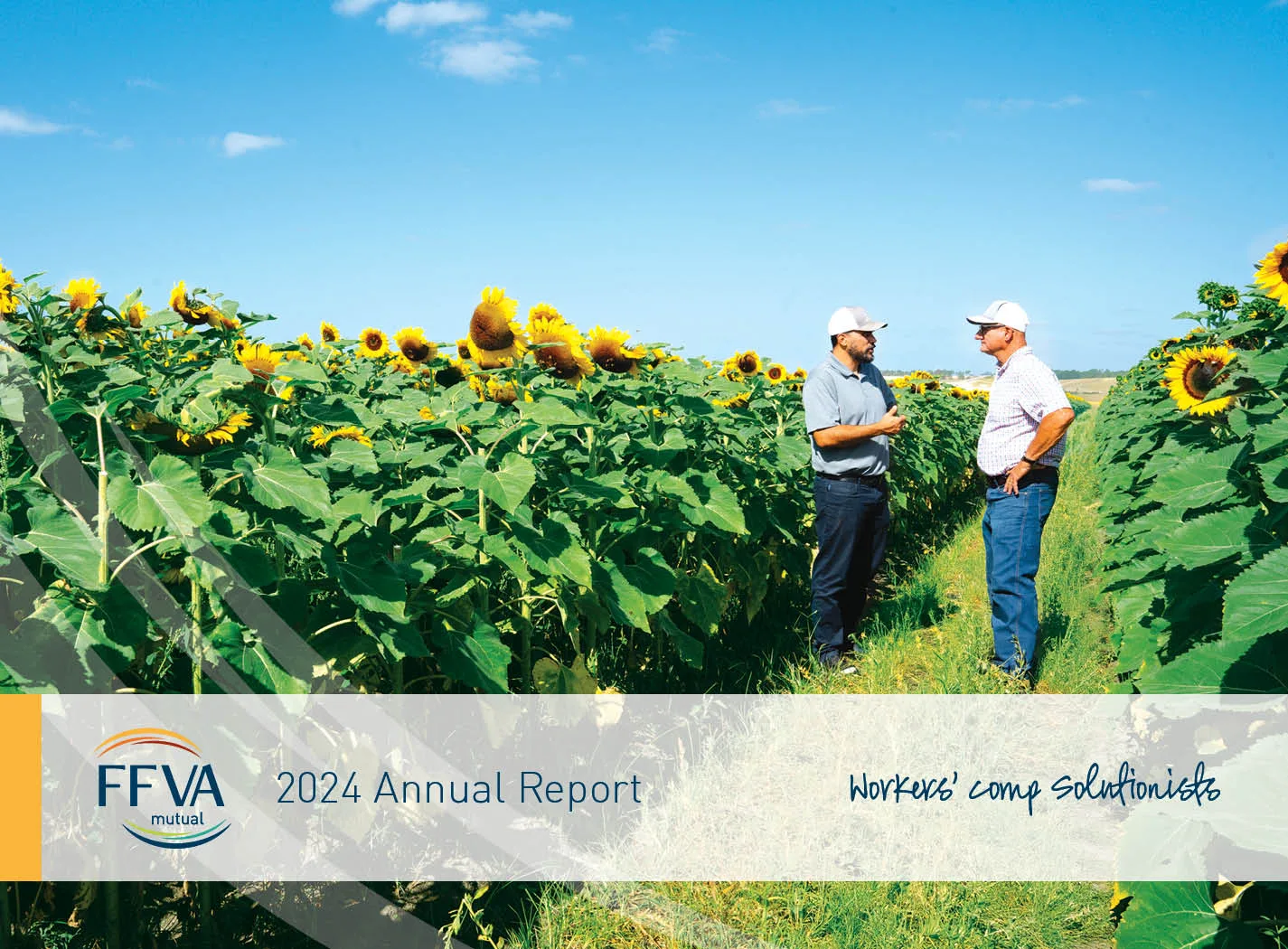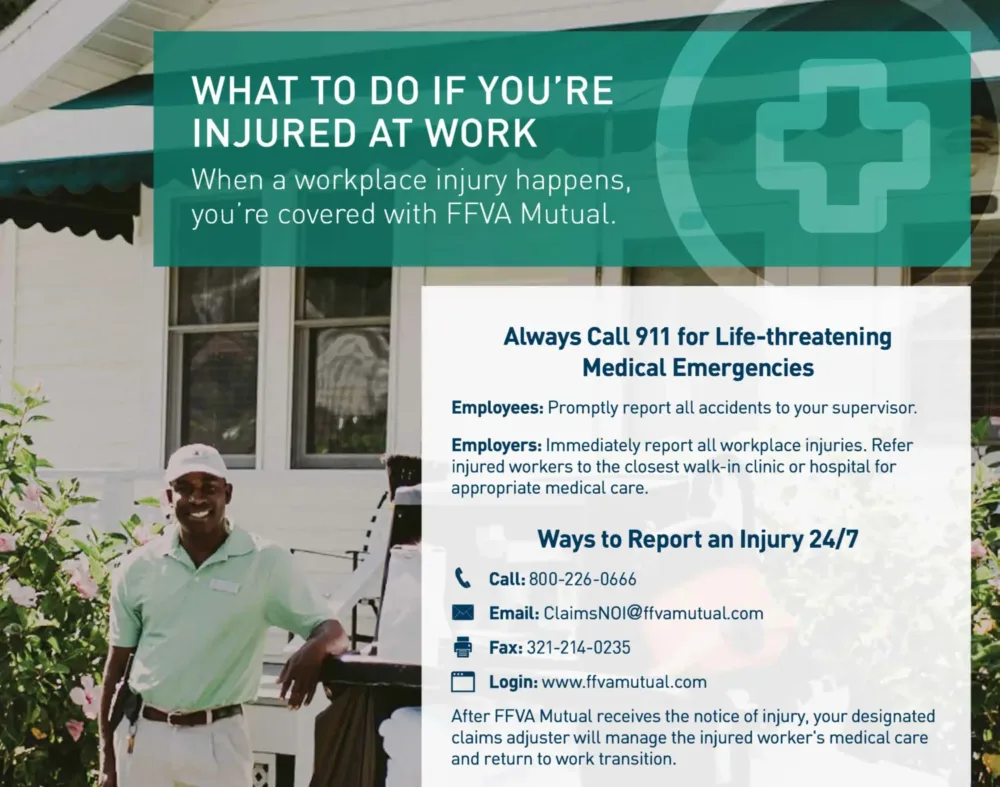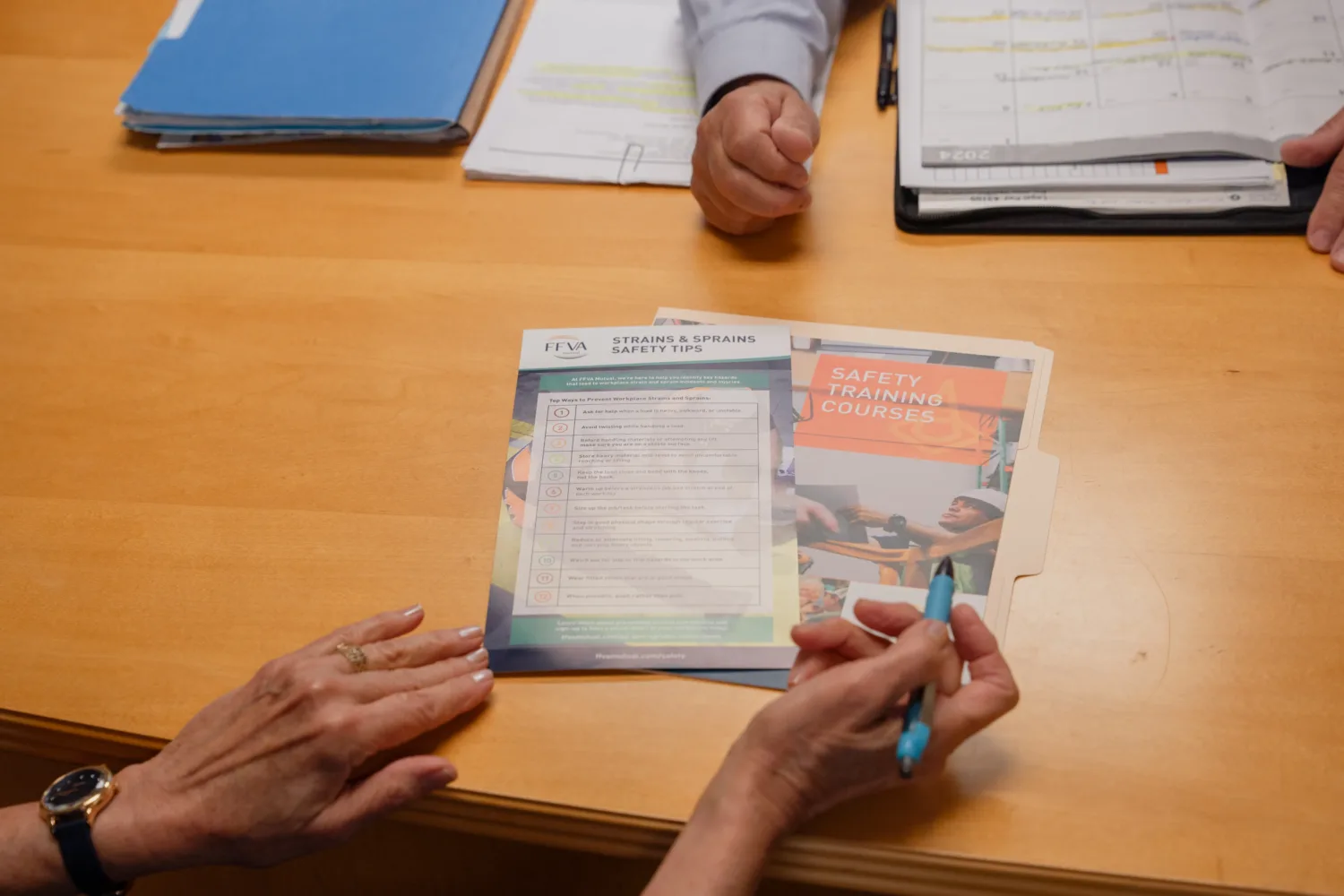How to Identify and Reduce Common Safety Hazards Within the Workplace
You should always be on the lookout for safety hazards in the workplace. While it’s difficult to fully and completely guard against every potential risk, identifying common workplace hazards can help you put together a good plan to keep all of your employees as safe as possible.
It’s important to have the right information on hand to ensure you’re able to spot safety hazards before they cause harm to any of your employees. Continue reading to learn more about the most common workplace hazards and how to put the right plan together to guard against them.
6 Common Workplace Safety Hazard Types and Examples
Workplace safety hazards come in many different forms. While some might be a little more obvious, others can be a bit tricky to pinpoint. Here are the main types of safety hazards you should be aware of:
- General workplace safety hazards: These include any risk likely to cause falls, slips or trips and lead to injury, illness or even death. They’re most common on construction sites or other settings where employees must operate machinery.
- Biological hazards: Biohazards involve any materials or substances that could have a harmful effect on human health. While this often includes infection from viruses, it can also mean contact with bodily fluids, blood, fungus, medical waste, insects and a number of nasty toxins. Healthcare, agriculture and laboratory workers face the highest risks of biological hazards, but any industry dealing with hazardous materials should implement strict hazard communication and protective measures.
- Physical hazards: These pose a danger to the physical safety and well-being of your employees. They are more commonly associated with physically demanding jobs (like overexposure to sun or cold outdoor conditions), but physical hazards can affect any workplace. Noise and overly confined workspaces can also pose physical safety risks. Occupational safety programs should address these risks through proper ventilation, noise reduction strategies and protective gear.
- Ergonomic hazards: Think body strain. Work environments that encourage employees to contort their bodies can lead to serious injury. This usually includes repetitive motion, lifting, pushing or pulling heavy objects, but even in office settings, spending too much time hunched over a laptop is associated with a range of ill health effects. When it comes to office ergonomics, it’s important to know how to protect your workers.
- Chemical hazards: It’s no secret that exposure to certain chemicals can cause serious harm. Dangerous substances can come in many different forms, including gases, liquids and solids, so they can sometimes be tough to detect with the naked eye. Workers in construction, manufacturing and cleaning services must follow strict safety protocols for handling chemical hazards and refer to safety data sheets for proper storage and use. Potential hazards include anything from skin irritants and carcinogens to chemical fires and corrosion. Workplace hazard communications prevent employee exposure to dangerous chemical products.
- Psychological hazards: Often overlooked, psychological hazards affect mental well-being. Workplace violence, bullying, stress and long hours contribute to occupational hazards that lead to burnout and decreased productivity. Common psychological hazards include overstress and fatigue, while the more serious risks involve bullying and even physical violence.
By recognizing and addressing these common hazards, your business can create a safer environment for employees and reduce workplace injuries. Implementing preventive measures and fostering a strong safety culture ensures long-term workplace safety and compliance with occupational safety regulations.
How Do You Know if Safety Hazards are Present in Your Workplace?
Understanding hazards within the workplace is essential but identifying whether they actively pose a risk to employees requires a keen eye and thorough assessment.
Some workplace hazards are visible, such as electrical hazards or trip hazards, while others, like psychosocial hazards, may be harder to detect. Employers must stay proactive in identifying potential risks before they lead to workplace injuries or violations of occupational safety standards.
To determine whether safety hazards exist in your workplace, ask these key questions:
- Are employees frequently injured, or are they reporting an issue that’s making them concerned about their safety?
- How often are problems arising?
- Where in your workplace are the most common issues happening?
- What conditions have workers brought to your attention?
How To Conduct a Safety Assessment To Identify and Correct Hazards
Once you’ve gathered input from employees, it’s time to create a plan for addressing risks. A strong safety assessment starts with reviewing past injuries, illnesses and incidents to understand the most pressing hazards. From there, you can use multiple strategies to identify and correct risks:
- Safety suggestion program: Set up an anonymous reporting system so employees can share concerns without hesitation. This builds trust and ensures you receive valuable feedback.
- Safety committee: Form a dedicated team responsible for investigating accidents, recommending corrective actions and developing safety programs.
- Safety meeting participation: Encourage workers to share personal experiences and suggestions in regular meetings. This peer input often highlights hazards leadership may miss.
- Workplace evaluation: Perform daily walkthroughs and regular inspections. Consistent monitoring helps you spot hazards before they lead to costly accidents.
How To Identify and Manage Workplace Hazards
Managing safety hazards effectively requires a structured and ongoing approach. A good system doesn’t just check boxes; it actively reduces risks and builds a safer culture for employees. Here’s how:
- Identify hazards: Use routine inspections, employee reports and job hazard analyses to uncover potential risks. Walkthroughs of high-risk areas, equipment checks and anonymous reporting channels can help ensure nothing slips through the cracks.
- Evaluate risks: Not all hazards carry the same weight. Assess both the likelihood and severity of harm to prioritize corrective actions. For example, a loose electrical cord in a hallway may be a higher priority than a rarely used piece of equipment in storage.
- Control risks: Take steps to eliminate or minimize dangers. Controls can include safety training, personal protective equipment (PPE), safe work procedures or engineering solutions like machine guards and better ventilation. Always apply the “hierarchy of controls,” starting with the most effective (eliminating the hazard) before relying on PPE.
- Monitor and review: Workplaces evolve, and so do risks. Regularly review your safety plan, track near-miss reports and revisit known problem areas to ensure new hazards are quickly addressed. Annual audits, employee feedback sessions and updated training are critical for keeping safety efforts effective over time.
By following these steps, you can proactively manage risks and maintain compliance with occupational safety standards.
OSHA Regulations to Consider
Always consider the following regulations put in place by the Occupational Safety and Healthcare Administration (OSHA) as they relate to your practice:
| Workplace Hazard | OSHA Standard |
| Working with chemicals | Hazard Communication Standard |
| Working in confined spaces | Confined Spaces Standard |
| Loud noise in the workplace | Hearing Conservation Standard |
| Chemical spills | Emergency Response Standard |
| Fire | Emergency Action & Fire Prevention Standard |
| Hazards of machinery | Machine Guarding Standard |
| Falling from heights | Fall Protection Standard |
| Hazards of energy sources | Lock Out/Tag Out Standard |
OSHA’s General Duty Clause outlines what employers should do to protect employees from workplace hazards.
Safety Hazard FAQs
What are the 5 safety hazards?
Five common categories include physical hazards, chemical hazards, biological hazards, ergonomic hazards and psychosocial hazards.
What is a safety hazard?
A safety hazard is any source of potential harm that could cause injury, illness or death in the workplace.
How can employers reduce safety hazards in the workplace?
Employers can reduce hazards by conducting regular inspections, providing safety training, enforcing the use of PPE and creating a culture where employees feel comfortable reporting concerns.
Preparing for the Future
Health and safety always come first, but sometimes the unexpected happens. Workers’ compensation insurance is the best way to safeguard the wellness of your employees and keep your company up and running. FFVA Mutual is here to help. Do you have questions about workplace hazards, OSHA training, safety programs, drug-free workplace, fleet safety, return to work or other safety-related challenges? Simply ask a safety question and one of our expert safety consultants will get back to you with an answer!
